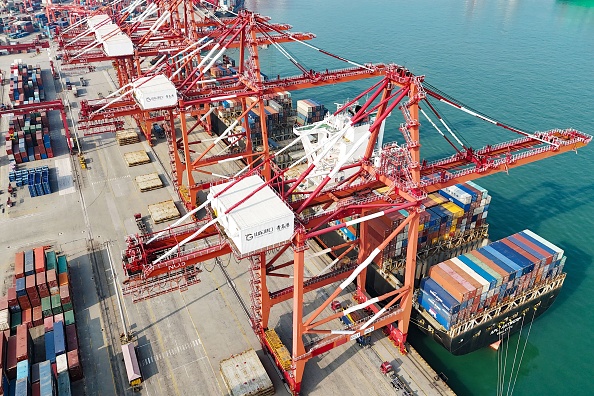Recently, the Chinese authorities have successively released data on imports and exports, the Consumer Price Index (CPI), and the Producer Price Index (PPI). The results indicate that both export and consumption data are below expectations, leading analysts to believe that the only bright spot in the Chinese economy is fading.
On Monday, October 14th, data released by the General Administration of Customs of China showed that in September, the export volume was 303.71 billion dollars, with a growth rate slowing to 2.4%. This growth rate is significantly lower than the previous month, narrowing by 6.3 percentage points, marking a five-month low and falling far short of the Reuters’ expectation of 6%.
Imports reached 222 billion yuan, with a growth rate slowing to 0.3%, 0.2 percentage points lower than the previous month and lower than Reuters’ expectation of 0.9%. The trade surplus was 81.71 billion US dollars, below the market expectation of 89.8 billion US dollars and lower than August’s 91.02 billion US dollars.
In an article published on Monday by Reuters, it was mentioned that weak data on imports is not a good sign for future exports because nearly one-third of China’s procurement is used for re-exporting components, especially in the electronics sector.
Huang Zichun, a macroeconomist at Capital Economics China, stated, “Export growth slowed last month but remained robust. However, the increasing trade barriers in the future could become a greater constraint.”
On October 4th, the European Commission approved a proposal to impose tariffs of up to 45% on electric cars produced in China. This move signifies that the European Union is joining the ranks of the United States and Canada in taking stricter trade measures against Beijing.
Wang Qing, Chief Macro Analyst at Orient Securities, stated, “Exports are still expected to maintain positive growth in the fourth quarter, but the downward risks for exports are higher against the backdrop of slowing external demand,” noting that manufacturing activities are far below the average level of the past decade.
China’s September Purchasing Managers’ Index (PMI) was at 49.8%, staying below the boom-bust line for five consecutive months. A PMI above 50 indicates expansion in the manufacturing sector, while below 50 suggests contraction.
According to the data released by the National Bureau of Statistics of China on Sunday, September’s PPI fell by 2.8% year-on-year, marking the largest decline in six months, and a 0.6% decrease month-on-month, the lowest since April 2024.
Zhang Zhiwei, Chief Economist at Pinpoint Asset Management, also pointed out that “due to escalating trade tensions, maintaining strong export growth next year will be very challenging.”
The data from the National Bureau of Statistics of China also revealed that September’s CPI rose by 0.4% year-on-year, lower than the Reuters survey prediction of 0.6%, with a 0.2% decrease month-on-month; the core CPI, excluding food and energy, saw its year-on-year growth rate drop by 0.2 percentage points to 0.1%, marking a new low since March 2021.
Pang Ming, Chief Economist of Greater China at Cushman & Wakefield, stated that the core data consistently staying below 1.0% for 20 months reflects weak inflation momentum and the need for stimulating consumer spending.
Investment, consumption, and exports are known as the three drivers of the Chinese economy. However, with weak consumption, increasing deflationary pressures, a sharp decline in exports, and a bleak outlook, the investment growth rate in the Chinese economy is also declining.
According to the “Statistical Data Report on the Incremental Size of Social Financing in the First Half of 2024” released by the People’s Bank of China in September, the incremental size of social financing in the first eight months of 2024 was 21.9 trillion yuan, which was 3.32 trillion yuan less than the same period last year. Among these, RMB loans issued to the real economy increased by 13.42 trillion yuan, a decrease of 3.57 trillion yuan compared to the previous year; while foreign currency loans to the real economy converted into RMB decreased by 158.3 billion yuan, a decrease of 80 billion yuan year-on-year.

